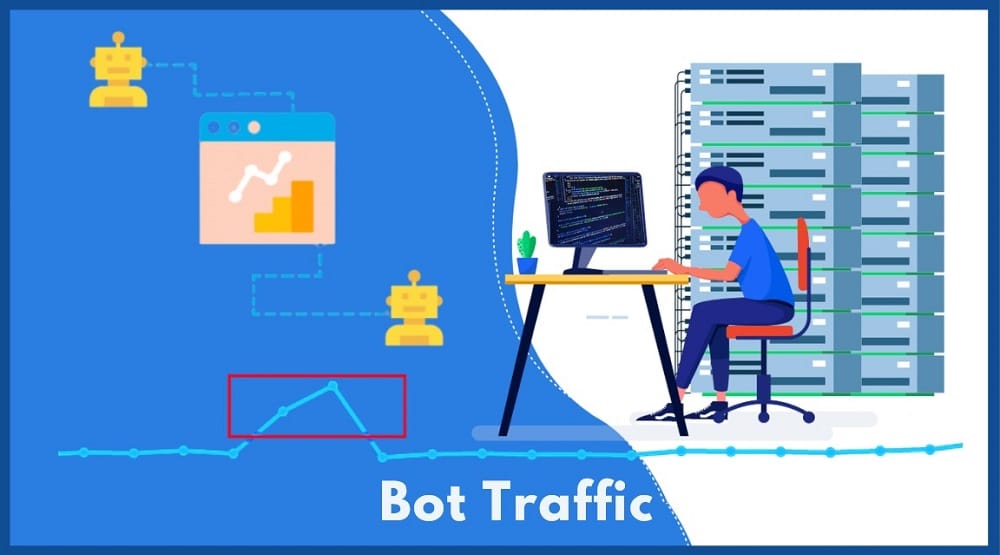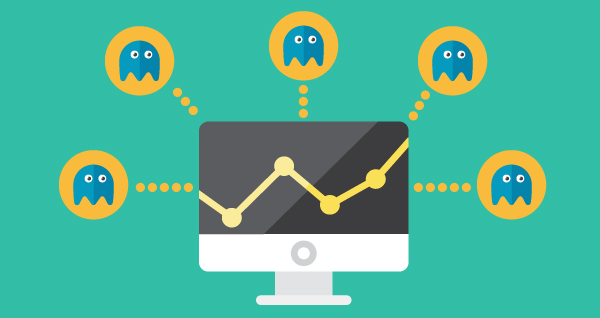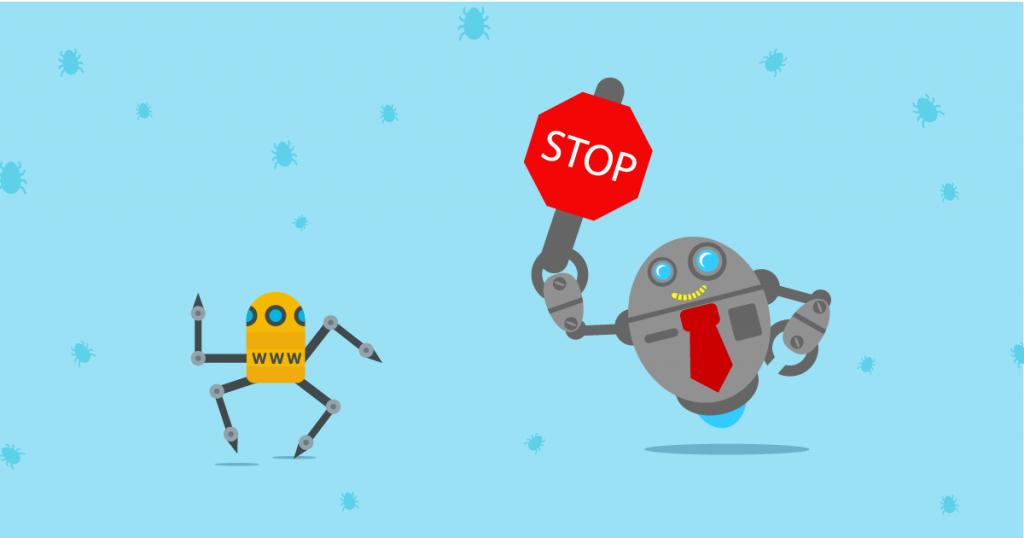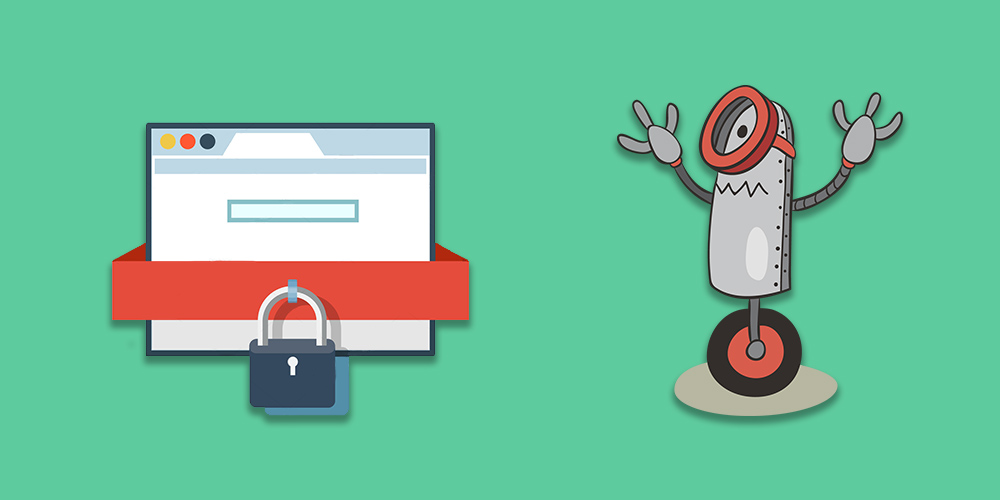
Are you tired of clicking images on Captcha while accessing information from any website? Have you ever wondered why you are answering questions like, “Are you a human?” If you answered “yes,” you’re not alone. These are legitimate concerns of website owners, who are constantly trying to monitor their websites from the malicious bots that may try to sneak into their websites to steal information, scrap websites, manipulate their search engine ranking, or loot their ad revenue.
Defining ‘Bots’ And Bot Traffic

A bot, which is short for a robot, is an automated computer program that acts as an agent on behalf of a user to simulate human activity. They are non-human visitors to websites that facilitate a variety of tasks, including search engine operations, human interactions, social and commercial activities such as gaming, customer services, and medical services like scheduling a vaccine appointment. The same bot can be used for fraudulent practices and malicious activities like ad scams, malware attacks, and data theft. Bot traffic is online internet traffic that is not generated by a human.
Why Do We Need Bots At All?
With 4.72 billion internet users in April 2021, there’s a constant influx of information: images, text, music, and videos. Of course, there’s also activities like messaging, commenting, tweeting, or re-tweeting with emojis and emoticons, making it a place for personal, professional, and business interactions.
Search engines are an essential part of our daily life as there are over 70,000 Google searches each second, 227 million an hour, and about 5.4 billion Google searches per day. Automated bots are applied to save users time in doing things manually and to perform a wide range of tasks from clicking links and downloading images to scraping or filling out forms on a large scale and function almost non-stop. Although these bots try to imitate human behavior, they are not human. But they do serve a purpose—and not all of them are good.
Good vs. Bad Bot Traffic

Not all the bot traffic visible on the internet is bad traffic. In 2020, one-fourth of the Internet traffic (25.6%) was bad bot traffic, an upwards trend from 2019, which was 24.1%. Combined with good bot traffic, 40.8% of the internet traffic comprised of non-human traffic, and human are responsible for generating 59.2% of the internet traffic past year. A significant portion of what we notice on websites was not human and human traffic decreased by 5.7 percent in 2020.
As a business owner, it’s important to recognize the positive impact of bots and be able to mitigate the bad bot traffic so it doesn’t throw off your data.
Bot Traffic: The Good
- Search engine bots– Reviews content and indexes it to show up in search engine results. E.g., Google, Bing, or Yandex.
- Monitoring Bots- Constantly monitors websites and alerts users when there are major changes.
- Copyright Bots- Checks copyright violations in the content, including text, music, images, and video.
- Commercial Bots- Market research companies that monitor customer reviews, ad optimization places, etc., and deploy them.
- Chatbots- Interactive bots that imitate humans while conversing with users and replying to their queries with the help of preprogrammed answers.
- Feed Bots- Content aggregating or social media sites using bots that constantly look for newsworthy content and feed them to the internet.
- Personal assistant bots- Browses the web for data and presents them to users.
Bot Traffic: The Bad
- Click Fraud Bots– Ad fraudsters deploy these bots for click spamming. It skews users’ analytical data so that the ad spend drains quickly.
- Download Bots- Adds fake downloads by tampering with the analytics-generated user engagement data.
- Spam Bots- Distracts users’ attention with phishing emails, ads, and unwanted and content. These bots break into user accounts and submit junk data through online forms. Unusual website redirects and negative SEO promotion of competitors are the best examples of spambots.
- Spy bots– This bot mines and steals valuable personal and business information like email addresses from websites, forums, and chat rooms.
- Scrapper Bots– This predatory bot that visits websites to steal business information on products, price, catalog, etc., and duplicates them elsewhere.
- Imposter Bots– Injects spyware or malware to websites and performs cyber-attacks, and hacking.
How To Identify Bot Traffic Attack?

Social media posts that receive unusual traffic or responses are most likely victims of bad bot traffic. Other indicators that you’ve received bad bot traffic include:
- Unusual high page views on your website
- Invasion of junk emails in your inbox
- Higher bandwidth usage
- Faulty Google Analytics
- Decreased conversion rates
- Longer time to load files
- Slanted marketing data quality
- High server costs
- High bounce rate
- Increased stress on data centers
Consequences Of Heavy Bot Traffic

Bad bots post spam comments on social media, spreading misinformation and confusion. Circulating fake information on COVID vaccination and cases is one such example that created havoc in society. Another example is the target of online retail stores during festive and holiday seasons, where there will be a huge demand for consumer durables and electronics. There was a 788 percent increase in bad bot traffic to retail websites globally between September and October 2020, aligning perfectly with pre-order or holiday dates, and the gaming hardware market has lost $82 million during holiday seasons due to Grinchbot attacks.
How To Block Bots On Google Analytics?

Google Analytics provides all the essential site metrics that you need as a business owner, including average time spent on the page, bounce rate, the number of page views, and other useful data. This information is useful in determining whether or not bot traffic skewed your site’s analytics data and to what extent.
As you’re exploring Google Analytics, you’ll want to use some of the practices below to help restrict the bad bot traffic so you can have an accurate measure of what is drawing users to your website and what they’re doing once they’re there..
Set Thumb Rules In Robots.txt file
Any good bot management should start by setting a thumb rule in a website’s robots.txt file on a web server, which specifies the rules for any bots accessing the hosted website or application. This will stop bad bots from accessing sensitive information by limiting their entry only to certain pages within the website.
Declare An ‘Allow-list’
Allowlist is nothing but a list of bots that are allowed to access a web property. This can be accomplished either through a ‘user agent,’ the bot’s IP address, or both. The user agent is a string of text that identifies the bot trying to access information.
Make A Blocklist
Web servers can also have a blocklist to stop known bad bots. A blocklist contains a list of IP addresses, user agents, or other indicators of online identity that are not allowed to access a server, network, or web property.
Machine Learning Tools
Bad bots may try to sneak into your server with fake identities, making it difficult for the blocklist or allowlist to identify good and bad bots. Your bot management strategy must include machine learning tools that shed light on behavioral analytics. These tools can identify both bad bots and unknown good bots, apart from allowing known good bots. Add a bot manager to your perfect bot management strategy.
Conclusion

With over 50% of the internet traffic made up of bot traffic, it is neither possible nor desirable to eliminate them. What is essential here is to have a suitable bot management strategy to identify and block bad bots and allow god bots to ensure cybersecurity. If you want to read on Data Privacy, Cybersecurity, and more, read our blog here!
